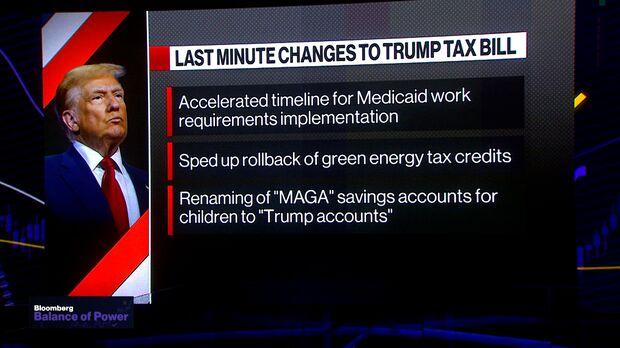The recently enacted tax legislation championed by former President Donald Trump has sparked intense debate over its potential impact on the U.S. economy. However, according to analysis featured in Barron’s, the measure is unlikely to significantly help or harm economic growth. With the national deficit already at historically high levels, the bill’s fiscal effects may be overshadowed by broader budgetary challenges facing the country. This article explores the key findings and implications of Barron’s assessment on the tax bill’s economic significance.
Trump’s Tax Bill Shows Minimal Impact on Economic Growth Projections
Recent analyses indicate that the anticipated economic stimulus from the tax reform under President Trump has not significantly altered growth projections. While the legislation introduced notable tax cuts for corporations and individuals, economic models show only a marginal uptick in GDP growth-if any. Economists suggest that the temporary nature of certain provisions and offsetting fiscal pressures, such as rising interest costs and trade uncertainties, have tempered any meaningful boost to the overall economic outlook.
Key considerations include:
- Corporate tax rate reductions improve after-tax profits but don’t guarantee increased investment.
- Individual tax cuts are staged to expire, limiting long-term consumer spending effects.
- The already substantial federal deficit constrains fiscal maneuverability, reducing policy impact.
| Economic Indicator | Pre-Tax Bill Projection | Post-Tax Bill Projection |
|---|---|---|
| Annual GDP Growth | 2.3% | 2.4% |
| Federal Deficit (% of GDP) | 4.5% | 5.0% |
| Corporate Investment Growth | 3.0% | 3.1% |
Experts Analyze How the Large Deficit Overshadows Fiscal Policy Effects
The persistent and substantial federal deficit has become a dominant concern, effectively muting the potential short-term impacts of recent fiscal policies. Experts argue that while changes in taxation may shift economic incentives, the scale of the existing deficit overshadows these effects, limiting any measurable boost or drag on economic growth. This imbalance strains government resources, compelling policymakers to focus more on deficit management than on stimulative strategies, thereby dampening the influence of laws like the recent tax reforms.
Key points from analysts include:
- The deficit’s rapid expansion reduces fiscal flexibility for future economic challenges.
- Short-term taxpayer relief is unlikely to translate into sustained economic growth due to structural budgetary issues.
- Interest payments on debt consume an increasing portion of federal spending, limiting funds for infrastructure and social programs.
| Fiscal Year | Deficit (Trillions USD) | Interest Expense (% of Fed Budget) | |||||||||||||||||||||
|---|---|---|---|---|---|---|---|---|---|---|---|---|---|---|---|---|---|---|---|---|---|---|---|
| 2017 | $0.66 | 6% | |||||||||||||||||||||
| 2019 | $1.02 | 8% | |||||||||||||||||||||
| 2023 (Projected) | $1.50 |
| Fiscal Year | Deficit (Trillions USD) | Interest Expense (% of Fed Budget) | ||||||||||
|---|---|---|---|---|---|---|---|---|---|---|---|---|
| 2017 | $0.66 | 6% | ||||||||||
| 2019 | $1.02 | 8% | ||||||||||
| Policy Recommendations Focus on Long-Term Deficit Reduction and Sustainable Spending
Addressing the ballooning federal deficit requires policymakers to look beyond quick fixes and prioritize structural reforms that ensure fiscal responsibility over decades. This means embracing a balanced approach involving both revenue enhancements and careful spending controls rather than relying solely on short-term tax policies. Experts argue that without decisive action, entitlement programs and defense spending will continue to outpace revenues, straining public finances and limiting economic flexibility. Key strategies under consideration include:
Key TakeawaysIn sum, while the debate over Trump’s tax bill has generated significant political and public attention, economic analysts concur that its overall impact on the broader economy is likely to be minimal. With the national deficit already at historic levels, the legislation’s fiscal consequences further complicate the government’s long-term budget outlook. As policymakers and stakeholders continue to weigh the bill’s implications, the focus remains on addressing structural challenges that extend beyond short-term tax reforms. |










